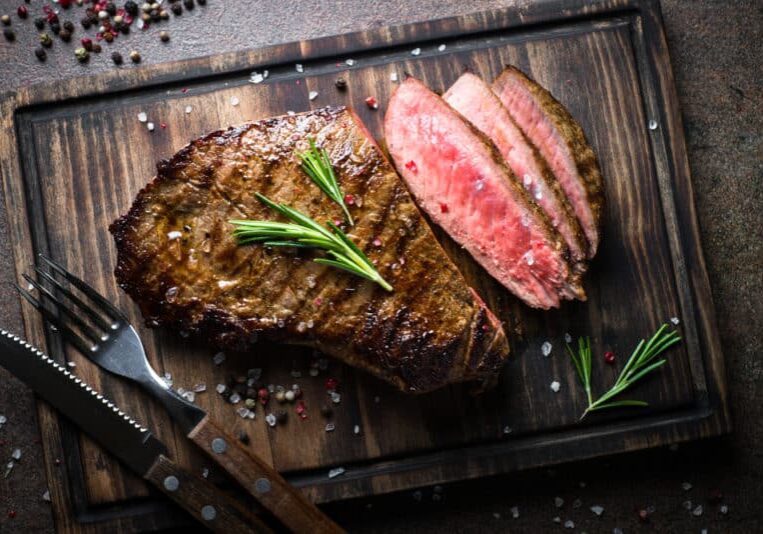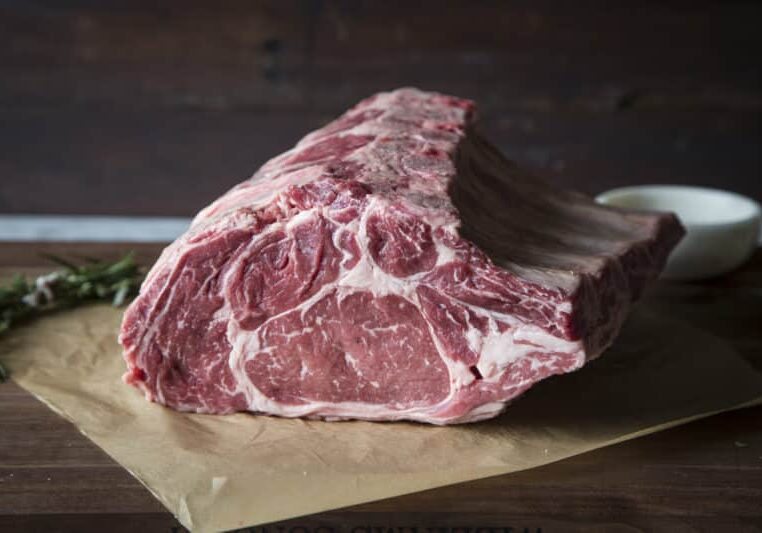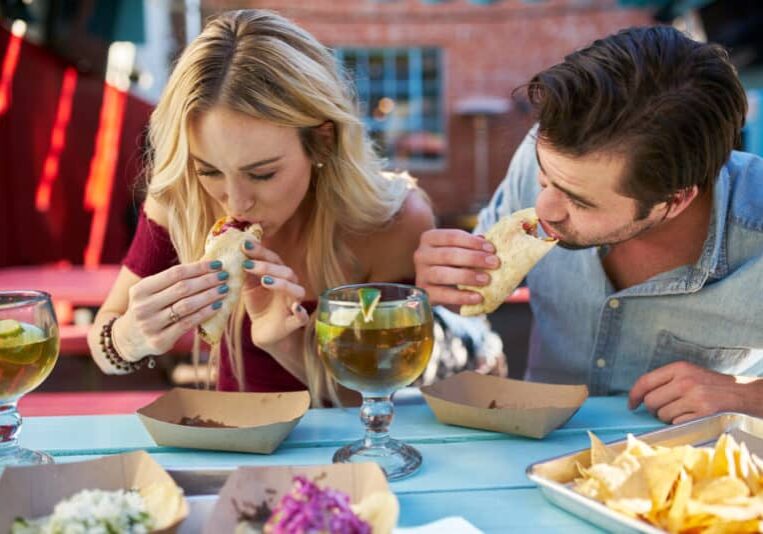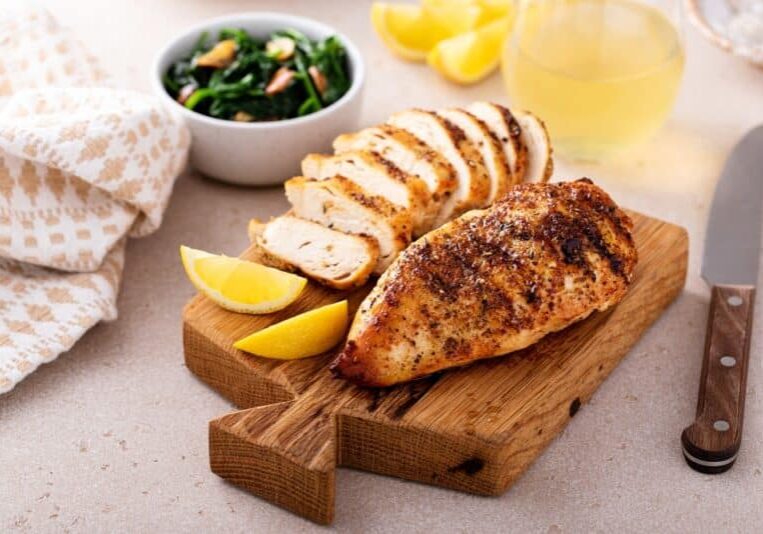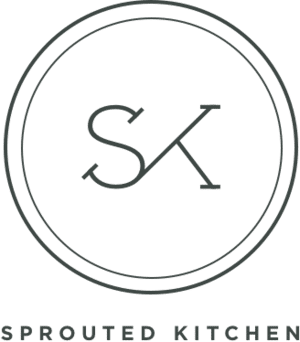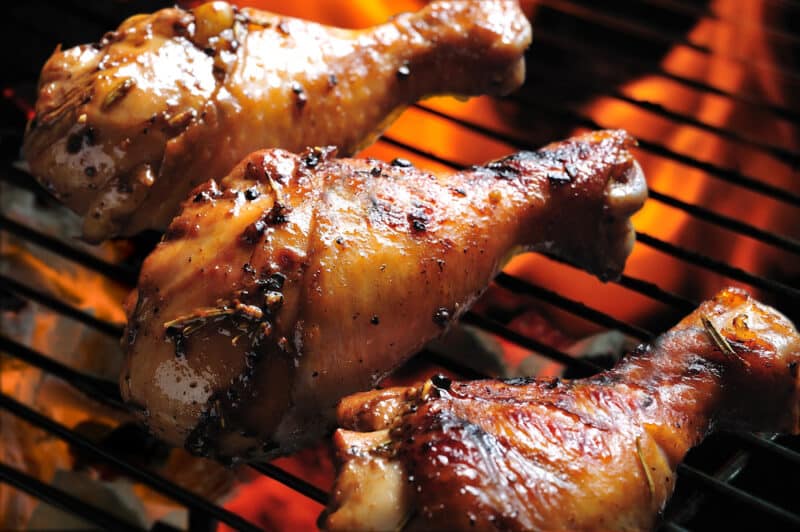How to Cook Steak on a Griddle [Best Method]
TheGrillingMaster.com is reader-supported. If you buy something using the links on our site, we might earn an affiliate commission at no added cost to you. This helps us pay our staff to keep making awesome content for you!

To cook steak on a griddle, begin by prepping your steak with seasonings. Preheat your griddle to high heat. Then place your steak on the griddle and sear each side for a few minutes to form a crispy crust. Lower the heat and continue cooking the steak until it reaches your desired doneness, using a meat thermometer to ensure accuracy. Rest the steak for a few minutes before serving to allow the juices to redistribute.
Related Reading: See how to reheat your steak for max flavor.
Today, we’re diving into the wonderful world of cooking steak on a griddle.
Now, you might be used to grilling your steaks, but let me tell you, using a griddle can take your steak game to an entirely new level.
Not only does it allow for even cooking but it also gives your steak a fantastic and crispy sear that’s hard to beat.
Choosing the Right Steak
When it comes to cooking steak, the cut you choose can make a world of difference. For griddling, there are a few cuts that work particularly well.
My top three choices would be ribeye, sirloin, and filet mignon.
- The ribeye is known for its rich, full flavor, thanks to the marbling of fat that runs through it. As it cooks on the griddle, this fat melts, infusing the meat with a succulent flavor that’s hard to resist.
- The sirloin, on the other hand, is a leaner cut, yet it doesn’t skimp on flavor. It’s the perfect balance of tenderness and taste.
- As for the filet mignon, it’s the epitome of tenderness. It’s a smaller, leaner cut, but what it lacks in size, it more than makes up for in taste and texture.
I dont usually use flank steak with this method, but if you are interested in using flank steak see my guide here.
Now, let’s talk about the importance of steak thickness. I can’t stress enough how crucial this is when it comes to cooking your steak on a griddle.
Generally, a steak that’s about 1 to 1.5 inches thick will give you the best results.
Why?
This thickness allows your steak to develop that gorgeous, crispy crust on the outside while ensuring the inside cooks to perfection. If your steak is too thin, you run the risk of overcooking it before you get a decent sear.
Conversely, if it’s too thick, you will end up with a steak that’s burnt on the outside and raw on the inside.
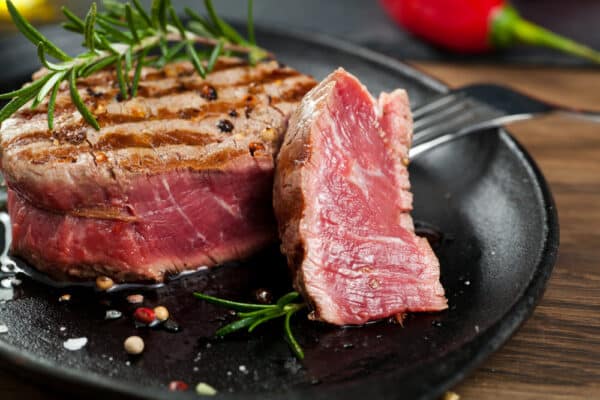
Preparing the Steak for the Griddle
First and foremost, it’s important to bring your steak to room temperature before cooking.
This is a step many people skip but trust me, it’s worth the extra time.
When the steak is at room temperature, it cooks more evenly which helps with reducing the risk of a well-done outside with a raw inside.
Just take your steak out of the fridge and let it sit for about 30-40 minutes before you plan on cooking.
Now, for seasoning there are countless options, but let’s start with the basics:
-
Salt and Pepper: This is the simplest and arguably the most classic way to season a steak. Just sprinkle on some coarse salt and freshly ground black pepper on both sides. Don’t be shy, the steak can handle more seasoning than you think.
-
Marinade: If you want to add an extra layer of flavor, a marinade can do wonders. My favorite is a simple mix of olive oil, minced garlic, rosemary, and a splash of balsamic vinegar. Just remember, if you choose to marinate, give the steak a few hours to soak up all those flavors. Overnight is even better!
-
Dry Rub: This is another great way to pack in flavor. You can use a mix of spices like paprika, cayenne, onion powder, and garlic powder. Rub the mix all over the steak, making sure it’s well coated.
Related Reading: How to smoke steak.
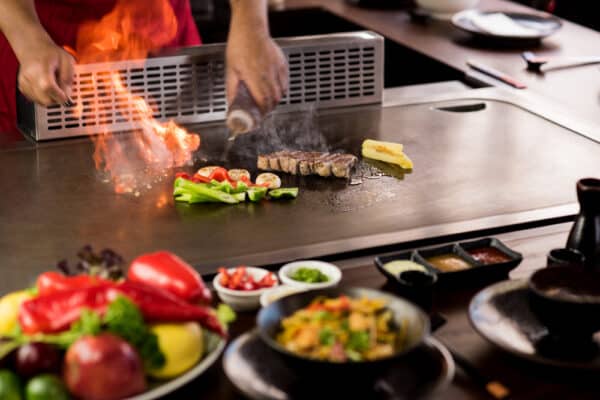
Setting up the Griddle
Now that our steaks are seasoned and ready to go, it’s time to get that griddle sizzling. Setting up your griddle correctly can really make or break your steak-cooking experience.
-
Preheating the Griddle: Start by preheating your griddle on high heat. You want it to be smoking hot when you put your steak on. This ensures you get that delicious sear that locks in all the flavors. It should take about 5 to 10 minutes for the griddle to reach the desired temperature.
-
Griddle Safety: While we all love the sizzle and smell of a steak cooking, it’s crucial to keep safety in mind. Always use heat-resistant gloves or oven mitts to protect your hands and always keep a safe distance from the griddle when the steak is cooking to avoid oil splatters.
-
Prepping for the Steak: While your griddle is heating up, get a pair of tongs ready. A good pair of long tongs can help keep your hands a safe distance from the heat and give you more control when flipping the steak.
Preheating and setting up your griddle correctly will set you up for a successful steak-cooking session.
Remember, a hot griddle is key to that irresistible crust we’re aiming for, and safety should always come first.
Now, we’re ready to cook our steak. It’s showtime!
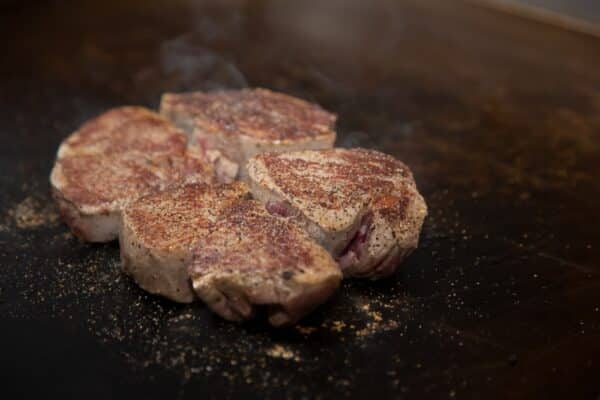
How to Cook the Steak on the Griddle
Alright my grilling friends, now we’ve come to the main event: cooking the steak.
This is where all our preparation pays off, transforming that seasoned cut of beef into a succulent, sizzling steak.
-
Placing the Steak: With your griddle hot and ready, gently lay your steak onto the surface using your tongs. You should hear that satisfying sizzle as soon as the steak hits the griddle. That’s the sound of a perfect sear in the making!
-
Searing the Steak: Allow the steak to cook undisturbed for about 2-3 minutes. This is how we get that fantastic, caramelized crust. Resist the temptation to move or lift the steak during this time; just let the griddle do its magic.
-
Flipping the Steak: After the first side is properly seared, use your tongs to flip the steak over. You should see a beautiful, golden-brown crust on the cooked side. Now, give the other side the same treatment, allowing it to sear for another 2-3 minutes.
-
Checking for Doneness: The cooking time after searing will depend on your preferred level of doneness. The best way to ensure accuracy is by using a meat thermometer. For medium-rare, aim for an internal temperature of about 130-135°F. For medium, look for a temperature around 140-145°F. For medium-well, you’re aiming for 150-155°F.
-
Adjusting the Heat: If you notice the steak getting too dark too quickly, don’t hesitate to adjust the heat. Remember, we want a crispy exterior, but we also want the inside to cook to perfection.
Cooking the perfect steak is a balance of heat, timing, and patience.
Always keep a close eye on your steak during this process.
Listen to the sizzle, smell the tantalizing aromas, and watch as the steak transforms into a meal you can’t wait to dive into. Next, we’ll move on to the important step of resting and serving the steak
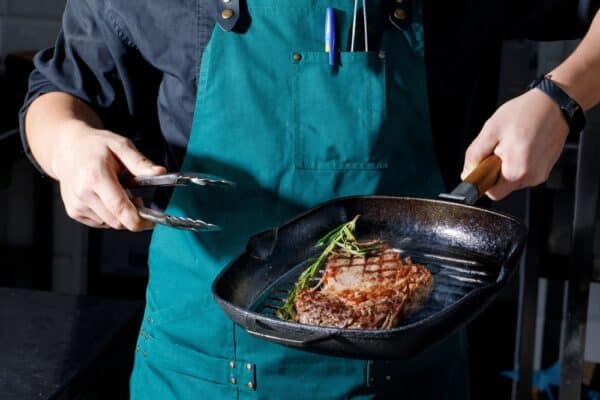
Resting and Serving the Steak
Now, if you think the journey to steak perfection ends as soon as you remove the steak from the griddle, you might be surprised.
One of the most important steps is actually what happens after the griddle: resting and serving the steak.
As tempting as it might be to dig into that sizzling, mouth-watering steak right away, you need to let it rest first.
Resting allows the juices to redistribute throughout the steak, which makes it all the more succulent when you take that first bite.
-
Resting the Steak: To rest your steak, just transfer it to a cutting board or a warm plate and let it sit undisturbed for about 5-10 minutes. Trust me on this one, your patience will be rewarded with every juicy, flavorful bite.
-
Slicing the Steak: If you’re serving the steak whole, then you can skip this step. However, if you’re slicing the steak, make sure to cut against the grain. This means you should cut across the fibers of the meat, not parallel to them. This will make your steak even more tender.
-
Serving the Steak: Finally, it’s time to serve your steak. While it’s fantastic on its own, you can also pair it with some delicious sides. Grilled vegetables, a fresh salad, or some creamy mashed potatoes are all excellent choices. And if you want to add a touch of decadence, a pat of compound butter melting on top of the steak can elevate it to new heights of deliciousness.
The resting and serving stage is where your cooking skills truly shine. It’s about taking that perfectly griddled steak and presenting it in a way that does justice to all the care you’ve put into preparing and cooking it.
Troubleshooting Common Problems
- One problem you might encounter is the steak sticking to the griddle. This usually happens if the griddle isn’t hot enough when you place the steak on it, or if you try to flip the steak before it’s properly seared. Remember, patience is key. Give your griddle plenty of time to preheat, and allow the steak to sear undisturbed for a few minutes before you flip it.
- Another common issue is overcooking. This often occurs when the griddle is too hot for too long. After searing, you may need to adjust the heat to ensure the steak cooks evenly without burning. And of course, a meat thermometer is your best friend here. It’s the most accurate way to ensure your steak is cooked exactly to your liking.
I always try to remember that every cook has their off days, and even a steak that doesn’t turn out perfect can be a delicious learning experience. So keep these tips in mind, but don’t stress.
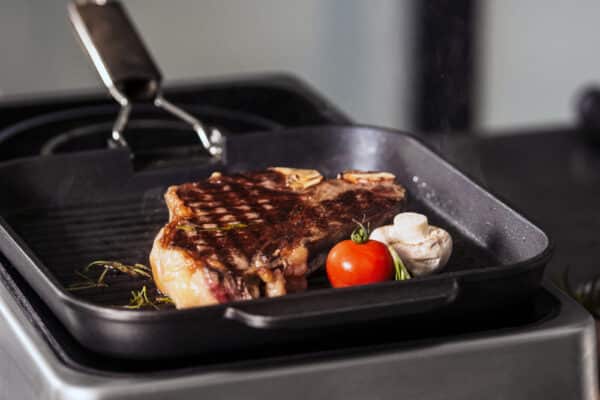
FAQ’s
-
Can I cook a frozen steak on a griddle? While it is possible to cook a frozen steak, it’s generally best to fully thaw the steak before griddling. This helps the steak cook evenly and achieve a better sear.
-
How do I clean the griddle after cooking steak? After the griddle cools down, scrape off any excess debris with a griddle scraper. Then wipe the surface with a damp cloth. For a deeper clean, use a mild detergent and warm water, but be sure to rinse thoroughly and dry the griddle to prevent rust.
-
What if I don’t have a meat thermometer? While a meat thermometer is the most accurate way to check doneness, the finger test can be a useful tool. Press the steak with your finger and compare the firmness to the fleshy part of your hand as you touch each finger to your thumb.
-
Can I use a non-stick griddle to cook steak? Yes, a non-stick griddle can be used, but it might not reach the same high temperatures as a cast iron griddle, which could affect the sear on your steak.
-
Should I oil the griddle before placing the steak on it? It’s not necessary to oil the griddle for cooking steak. The fat on the steak will render out and serve as a natural lubricant. However, a small amount of oil can help prevent leaner cuts from sticking.
Learn More About Grilling
If you want to learn more about grilling, check out these other helpful resources!
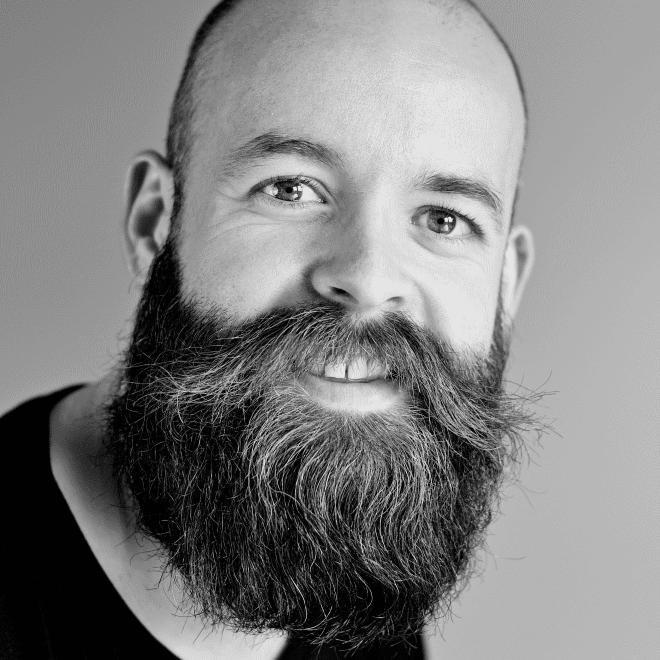
Kevin Turner
Hi there, I'm Kevin Turner, Founder and CEO of thegrillingmaster.com. I started this website to share my passion and knowledge with you. You can leverage my years of experience as a pit master and professional to grill great food!
About The Grilling Master
Hi there, I'm Kevin Turner, Founder and CEO of thegrillingmaster.com.
My passion has always been grilling, smoking and BBQ delicious meats that satisfy my inner carnivore!
I started this website to share my passion and knowledge with you, the hungry reader who wants to prepare the perfect meal.
You can leverage my years of experience as a pit master and professional.
Send me a message and let's connect on Twitter here.



